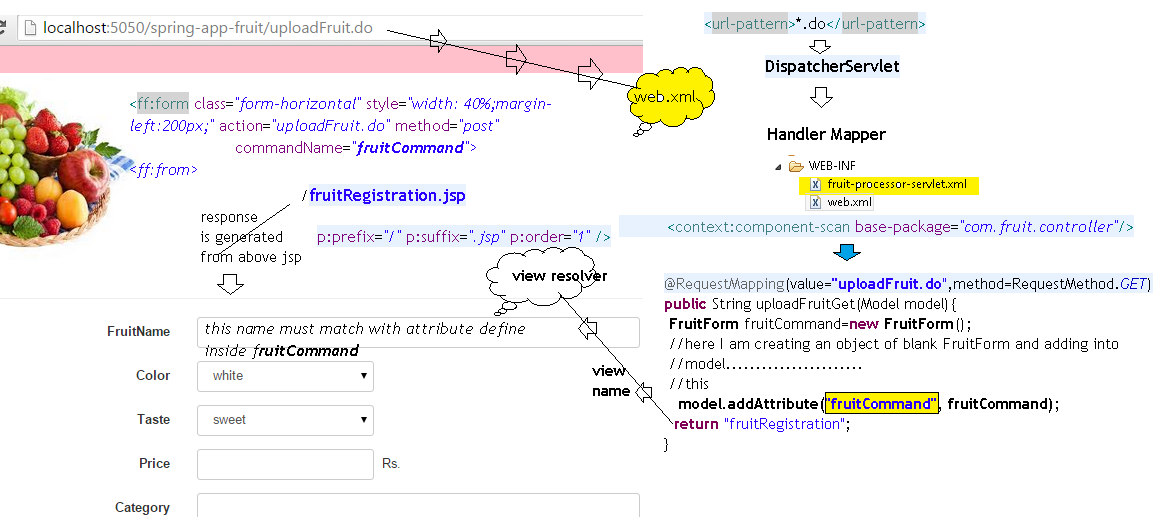Step-1
<!--
Spring is doing jndi lookup to access the connection pool manage by our server
jndi is service running on server.
-->
<jee:jndi-lookup id="bankDataSource" jndi-name="jdbc/synergy-bank-ds"/>
"bankDataSource" is pointing to the database connection. means we can communicate with database using bankDataSource.
Step-2
Create spring transaction manager for spring jdbc
<!--
DataSourceTransactionManager class comes from spring jdbc module
-->
<!-- Creating TransactionManager Bean, since JDBC we are creating of type
DataSourceTransactionManager -->
<bean id="jdbctransactionManager"
class="org.springframework.jdbc.datasource.DataSourceTransactionManager">
<property name="dataSource" ref="bankDataSource" />
</bean>
Step-3
Associating above transaction manager with annotation...........
@Transactional
<tx:annotation-driven proxy-target-class="true" transaction-manager="jdbctransactionManager"/>
Step-4
Applying above transaction manager inside the dao layer
@Repository("BankAdminDaoImpl")
@Scope("singleton")
@Transactional(propagation=Propagation.REQUIRED)
public class BankAdminDaoImpl extends JdbcDaoSupport implements BankAdminDao{
@Autowired
@Qualifier("bankDataSource")
// here we are injecting bankDataSource inside JdbcDaoSupport super class
public void setDataSourceInBank(DataSource dataSource) {
super.setDataSource(dataSource);
}
@Override
public List<CustomerEntity> findPendingCustomerList(){
List<CustomerEntity> customerList = super.getJdbcTemplate().query(AdminQuery.FIND_PENDING_CUSTOMER_LIST,
new BeanPropertyRowMapper<CustomerEntity>(CustomerEntity.class));
return customerList;
}
P.S. - > Spring Declarative Transaction is based on AOP..
How to know spring transaction is working or not..............??
boolean action=TransactionSynchronizationManager.isActualTransactionActive();
-------------------------------------------------------------------------------------------
action - true means spring transaction is enabled inside this method
Files involves in spring transaction for spring jdbc
1. synergyDataSource.xml
2. BankAdminDaoImpl.java

